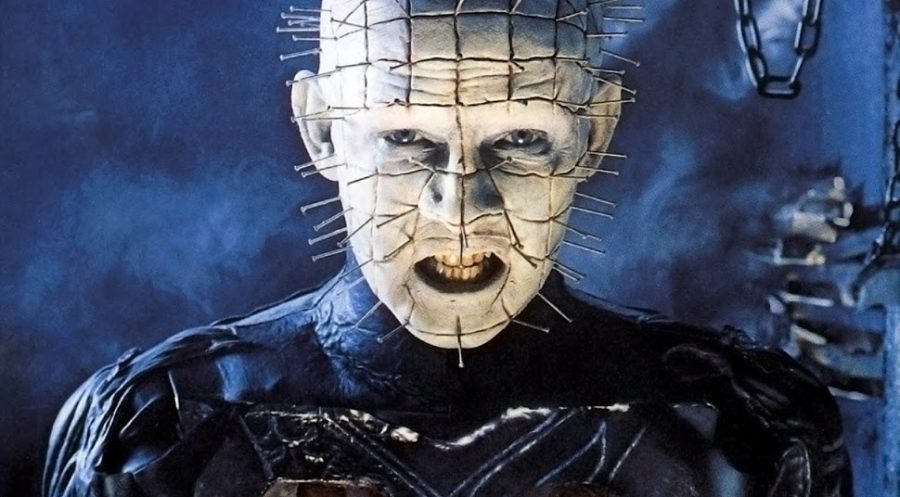Review: Hellraiser
Clive Barker’s Hellraiser still serves as a high watermark in the realm of low-budget freak-shows 30 years after hitting the big screen.
October 20, 2018
Released in 1987 by New World Pictures, the legendary production company founded by “Pope of Pop Cinema,” Roger Corman, Hellraiser divided critics upon its release. However, it has since grown in popularity, spawning a whopping nine sequels of questionable quality. Though the film’s modest budget of $1 million may suggest a lack of complexity or ornateness to some viewers, the film does a remarkable job at world-building, given its resources.
Based on Clive Barker’s own novella, The Hellbound Heart, the film follows a mysterious, otherworldly puzzle cube, and the rifts in reality that it causes alongside its travels. The cube falls into the hands of Frank Cotton (Sean Chapman), who opens an interdimensional portal into a nightmare world, becoming prey to a sadomasochistic group of beings known as cenobites. Frank’s brother Larry (Andrew Robinson) and his new wife Julia (Clare Higgins) move into their old and abandoned family home, and following a move-in accident, Larry spills blood on the attic floor. As a result, Frank escapes from the cenobites and begins his resurrection, absorbing Larry’s blood through the cracks in the hardwood. However, Larry’s blood is not enough for Frank to get his body back completely, so Frank conspires with Julia to lure additional victims into the attic to restore his body. Meanwhile, Larry’s daughter Kristy (Ashley Laurence) stumbles upon the puzzle box and the cenobites and slowly pieces together the sinister blood pact between Frank and Julia.
For a film centered on puzzles and how those puzzles interrupt reality, Hellraiser hardly asks the audience to decode its own deeper themes, opting to show them fully obvious instead. This is not to say that the film isn’t engaging or well-executed; however, even Hellraiser’s most baseline thematic explorations of lust and greed provide a decent amount to chew on. Julia’s affair and conspiracy with Frank has done more to upturn her new life with her family than the puzzle cube has, and her desire to see Frank get his body back is equally as voracious as Frank’s own. The film’s moral center is no puzzle, either, and of course, her complicity comes with a price. Despite this, there are a few slivers of thematic intricacy, evident in the skeleton of Kristy’s Electra complex as she fights to keep her father from her step-mother.
But Hellraiser would rather put its efforts (and budget) into set design and practical effects than any grand intellectual statements, and this is how the film really stands out. This nightmare world is not for those with weak stomachs. The cenobites are revolting, from the gothic ringleader Pinhead to the eyeless, noseless, and lipless Chatterer, these beings are skin-crawling mutations set on forcing others to experience their own fleshy horrors. Meat hooks pierce their victims in the torso, abdomen, and anywhere you can think of, but the worst is when the hooks pierce the face.
Outside forces contort the helpless victims of the cenobites, pulling and slicing through their features, permanently altering their complexions. Slimy and skinless Frank wanders in the darkness of the attic, consuming his prey, leaving no trace of flesh on their bodies. There’s more commentary in these torture scenes than anywhere else in the film — a reflection on the desecration of the human body and how this violation lies among our most primal fears. These are the images that persist in memory and that carry the film’s legacy forward.
Hellraiser isn’t an impressive film on all fronts, but where it lacks in the areas of compelling storytelling and performance, it makes up for in creating a mythology, impressively so through a nearly overwhelming series of body-horror atrocity exhibitions.



